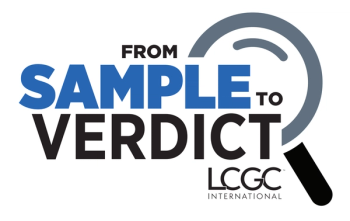
- LCGC Europe-05-01-2017
- Volume 30
- Issue 5
The Rising Profile of Comprehensive 2D LC
Some members of the separation science community are still not yet convinced of the value of comprehensive two‑dimensional liquid chromatography (LC×LC). They feel that the large increase in separation power (that is, in peak capacity: the number of component peaks that may possibly be separated) may be compromised by losses in sensitivity and robustness of the separation. However, the chairmen of HPLC 2017 will have seen a great number of abstracts come their way from scientists who want to change this perception.
Some members of the separation science community are still not yet convinced of the value of comprehensive twoâdimensional liquid chromatography (LC×LC). They feel that the large increase in separation power (that is, in peak capacity: the number of component peaks that may possibly be separated) may be compromised by losses in sensitivity and robustness of the separation. However, the chairmen of HPLC 2017 will have seen a great number of abstracts come their way from scientists who want to change this perception.
Amongst the almost 50 categories in which abstracts could be submitted, biopharmaceuticals and multidimensional separations were the most popular and both these subjects now extend across two sessions. Lectures on multidimensional chromatography are spread across a session devoted to LC×LC in the “FUN” (fundamental) track of the programme and a session devoted to the combination of LC×LC with mass spectrometry (LC×LC–MS) in the “HYP” (hyphenation) track.
The latter session features Dwight Stoll, who is this year’s recipient of the Georges-Guiochon Faculty Fellowship Award. The award is intended to support an emerging academic group and to enhance its visibility in the high performance liquid chromatography (HPLC) community. Despite being based in a small school (Gustavus Adolfus College, St. Peter, Minnesota, USA) and despite heading a research group consisting largely-if not exclusively-of MSc students, Dwight has done some great research. He will easily be able to convince LC×LC “sceptics” that the sensitivity of LC×LC can be much higher than that of conventional high-resolution one-dimensional (1D) LC. This is because the analytes can be focused on top of the (small) second-dimension column, to then be eluted in a short time with minimal dilution. It can all be achieved with a simple trick from Dwight’s book, just by adding water prior to a secondâdimension gradient-elution reversed-phase LC separation.
The chairmen of the meeting have done a great job to attract just about all the leading experts from within the field of HPLC, as well as a number of great scientists from a wider circle of separation science. The LC×LC–MS session will be spearheaded by W.C. Byrdwell from the US Department of Agriculture (Beltsville, Maryland, USA), who is a less familiar face in the HPLC community. His contribution is expected to be unique because he has his own definition of MSn, namely n parallel mass spectrometers coupled to a single HPLC system (with n up to at least 4). The majority of the audience will consist of liquid chromatographers and such an approach may make them feel mightily important.
If the sceptics find time to attend some of the LC×LC lectures, they will also be convinced of the reliability and robustness of LC×LC. Several speakers apply LC×LC routinely, underlining that the technique has arrived at a stage where it is applicable in real practice. Andre de Villiers from Stellenbosch (South Africa) has already demonstrated a number of excellent separations of foodârelated samples and C.J. Venkatramani will describe how 2D LC–MS of antibody–drug conjugates has progressed “from research to mainstream pharmaceutical analysis” in the industrial setting of Genentech. If that does not suffice, there will be the inimitable Bob Pirok (University of Amsterdam) from the appropriately named MANIAC project to explain one of the very many other applications of LC×LC technology for a completely different industrial application (comprehensive characterization of polymeric nanoparticles).
And yes, you may also have to listen to me, but don’t let that deter you from travelling to Prague and attending the two conference sessions, as well as the short-course on Sunday morning devoted to multidimensional LC.
There will be an awful lot more to learn and to enjoy during the HPLC 2017 Prague meeting. LC×LC only concerns about 5% of the entire scientific programme. There are many great speakers and excellent sessions in what promises to be one of the most exciting and enjoyable meetings in the HPLC series yet.
Peter Schoenmakers, University of Amsterdam, Amsterdam, Netherlands.
Articles in this issue
over 8 years ago
(U)HPLC: The Shape of Things To Comeover 8 years ago
The Role of LC–MS in Lipidomicsover 8 years ago
Contemporary Trends in Biopharmaceutical Analysisover 8 years ago
Advances in Glycomics in Biology and Medicineover 8 years ago
New Gas Chromatography Products for 2016–2017Newsletter
Join the global community of analytical scientists who trust LCGC for insights on the latest techniques, trends, and expert solutions in chromatography.




